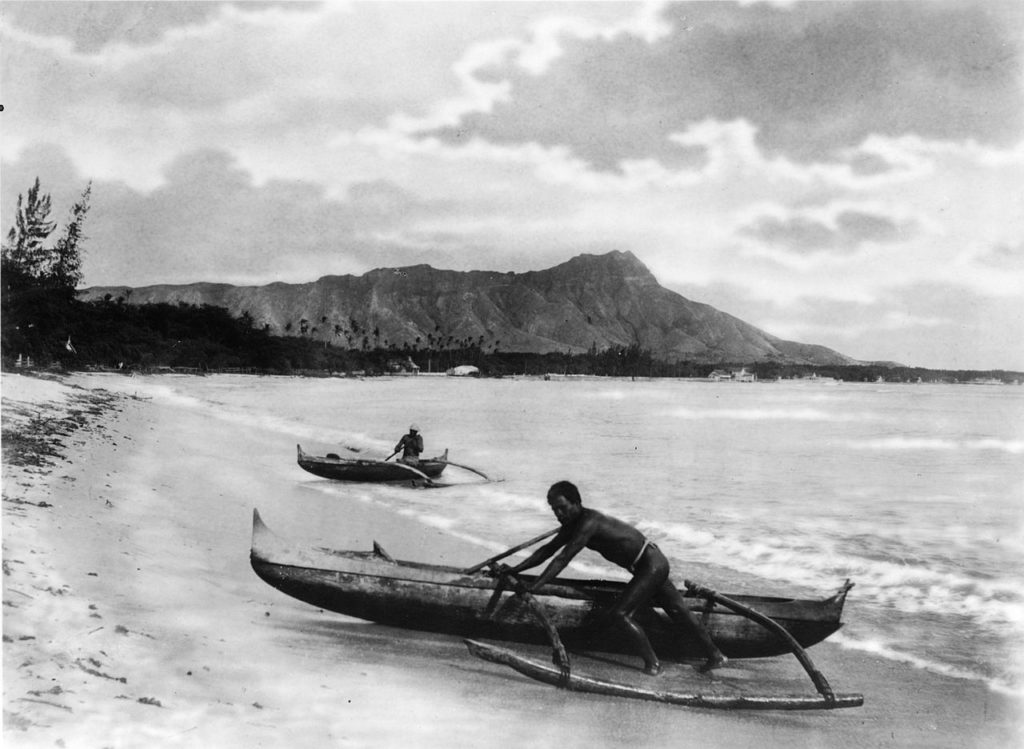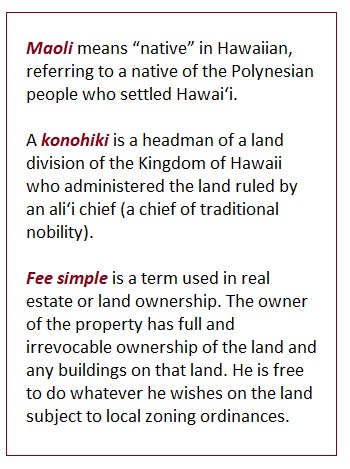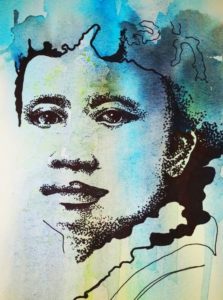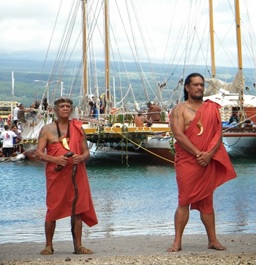September 2020
A publication of the Center for Parent Information and Resources
Written by Rosie Rowe, Executive Director, the PTI of Hawaiʻi
Return to the Native American Resource Collection

Native Hawaiians are the aboriginal, indigenous people who settled the Hawaiian archipelago, founded the Hawaiian nation, and exercised sovereignty over the Hawaiian Islands. Most recently, the findings of Act 195 (Session Laws of Hawai‘i 2011) (Endnote 1) formally recognized the Native Hawaiian people as the “only indigenous, aboriginal, maoli people” of Hawai‘i.
(2) Like the American Indians and Alaska Natives, Native Hawaiians are a distinct indigenous people that lived in and exercised sovereignty over territory with asserted boundaries for centuries prior to European contact and the formation of the United States Federal Government.Throughout their history, Native Hawaiians have maintained a deep reliance on land and nature, physical and spiritual well-being, identity, and language, as well as political empowerment. Prior to 1778, Native Hawaiians organized around a social system in which large extended families
(‘ohana) worked in cooperation and shared the fruits of their labor. Ruling chiefs emerged on every island and assumed stewardship over the land. They took on the responsibility of organizing the people to develop an infrastructure of irrigation networks, roads, and fishponds to intensify the production of food and basic necessities to support a rapidly expanding population.
This centuries-old way of life was changed abruptly in 1893 when the Kingdom of Hawai‘i was overthrown for political and financial gain by American and foreign businessmen. In spite of several attempts to petition and fight for a reinstatement of the traditional monarchy, the lives of Native Hawaiians would never be the same. They experienced long-standing historical trauma that has resulted in declining health, higher death rates, language loss, land confiscation, racial segregation, and loss of identity. Against all odds, Native Hawaiians have managed to maintain their national identify as a distinct people with a unique language, history, culture, and ancestral land base.

Health of Native Hawaiians
The first documented contact with Westerners occurred in 1778 when Captain James Cook, a British explorer, arrived in the islands, introducing Native Hawaiians to Western civilization. In the ensuing years, more and more people arrived in the islands, including missionaries, businessmen, navigators, and traders.
As the traffic to the islands increased, the Native Hawaiian population swiftly declined as new diseases like smallpox, measles, and venereal diseases were introduced. Hawaiians were especially vulnerable; having had no prior contact with these diseases, they had no immunity. Due in large part to these foreign diseases, 90% of Native Hawaiians died over the next hundred years—their population declining from an estimated 400,000 people to 40,000.
(3)
Language of Native Hawaiians
The Hawaiian language (‘Ōlelo Hawai‘i) is one of the oldest living languages in the world. The Hawaiian alphabet contains 13 letters: 8 consonants, 5 vowels, and no consonant clusters. After the annexation of Hawai‘i by the United States, the Hawaiian language was officially banned from schools and state government, almost making it extinct. In the early 1900s, a new language, pidgin, or Hawaiian Creole English, developed. It emerged from necessity, because many plantation workers came from different countries and spoke different languages.They still needed to be able to communicate, and so pidgin was created. It is still used in Hawai‘i today.
After years of advocacy to preserve the Hawaiian language, in 1978 Hawai‘i became the only state with two official languages: English and Hawaiian. Since then, the Hawaiian language has experienced a resurgence among all ethnic groups, not just among Native Hawaiians.
The Beautiful Hawaiian Land
Under pressure by foreigners who promoted a more Westernized system of land ownership, the reigning King in 1820 proposed a redistribution of land that divided it into three classifications: Crown, Government, and Konohiki land. After further policy and system changes, foreigners and Hawaiians could buy “fee simple land.” However, there were strict rules for obtaining land. Native Hawaiians and foreigners were required to prove (through land surveys) that their land was being cultivated to earn a living. Most Native Hawaiians did not have the money to pay for surveys or to keep up with the requirements of owning land. The result? Due to missed filing deadlines and their inability to pay taxes, Native Hawaiians ended up with only 1% of the total land available.
This injustice overwhelmed Native Hawaiians. They had lost over 90% of their land to foreigners, who bartered and created Westernized systems and restrictions that Native Hawaiians could not meet.caused deep pain and enduring trauma.
Policies of Racial Segregation

In the years leading up to and following the overthrow of Queen Lili‘uokalani, the last reigning Monarch, policies were put into place that contributed to racial segregation in Hawai‘i, including the prohibition of the Hawaiian language in schools and state government. Now, foreigners owned most of the non-government lands and profited from the value of agricultural production in Hawai‘i. Native Hawaiians joined contract laborers from Japan, China, Korea, Portugal, Puerto Rico, and the Philippines, working long hours on plantations for very little money. The onslaught of missionaries in Hawai‘i further undermined the national natural order of affairs; they actively influenced officials to denounce and deny the practice of Native Hawaiian cultural traditions.
Queen Lili‘uokalani, the last reigning Monarch
Identity of Native Hawaiian People

Yet, with the introduction of shipping and trade markets from across the Pacific, Hawai‘i became a melting pot of diverse ethnicities. In small-island populations, interracial marriages occurred among all ethnicities. By the 1900s Native Hawaiians who identified themselves as “100% blood quantum” would marry outside of their Native Hawaiian culture, and the number of full-blooded Native Hawaiians diminished by 50%. At that time, the population of Native Hawaiians was estimated at over 80,000.
(4)
Despite their traumatic history, the Native Hawaiian people have continued to endure as a unique, distinct, dignified people. They passionately seek measures of protection to regain traditions. They consider land as a perpetuation of their spirituality and cultural identity—as did their ancestors. And so they advocate for those sacred ancestral lands to be returned to their people.
Today, many Hawaiian Language Immersion Programs (HLIM) have been established and are helping young Hawaiians re-connect with their culture, language, and Native Hawaiian identity.
References | Endnotes
1—Act 195. §§ 1-2 2011 Hawaii Sessions Laws (codified at Haw. Rev. Stat. Ch. 10H).
2—McGregor, D.P., & MacKenzie, M.K. (2013, July).
A brief summary of the history of Native Hawaiian governance in Hawaii. Honolulu, Hawai‘i: Office of Hawaiian Affairs. Online at:
http://www.kalihipalama.org/wp-content/uploads/2016/07/A-Brief-Summary-of-the-History-of-NH-Governance-in-HIJuly-2013.pdf
3—Alexander, W. D. (1891).
A brief history of the Hawaiian people. New York: American Book Company. Online at:
https://www2.hawaii.edu/~anu/pdf/Brief_History_1891.pdf
4— McGregor, D.P., & MacKenzie, M.K. (2014, August).
History of Native Hawaiian governance in Hawai‘i. Honolulu, Hawai‘i: Office of Hawaiian Affairs. Online at:
https://www.doi.gov/sites/doi.opengov.ibmcloud.com/files/uploads/McGregor-and-MacKenzie-History_of_Native_Hawaiian_Governance.pdf



